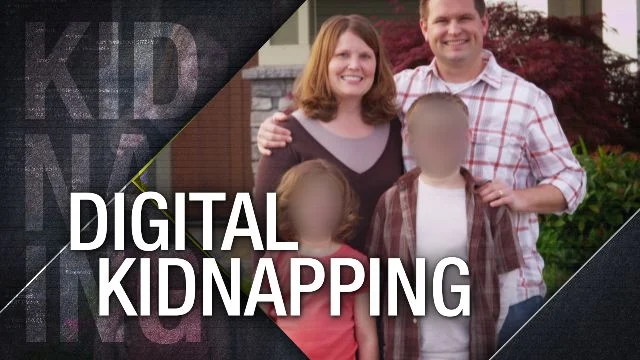Digital Kidnapping: A Modern Threat to Children’s Safety in the Digital Age

In an era where sharing moments online has become second nature, many parents unknowingly walk a fine line between celebration and exposure. The joy of parenthood often finds expression through adorable photos and milestone posts on platforms like Facebook, Instagram, TikTok, and Snapchat. But hidden within this culture of sharing lies a disturbing digital threat: digital kidnapping.
What Is Digital Kidnapping?
Digital kidnapping is the unauthorized use of a child’s image, often stolen from social media for various exploitative purposes. Unlike traditional identity theft that targets personal information, digital kidnapping involves hijacking a child’s photos to:
-
Create fake identities or family narratives
-
Participate in “baby role-play” games (e.g., on Instagram or TikTok under tags like #babyrp or #adoptionrp)
-
Fuel fetishes or fantasies
-
Sell to child pornography networks
-
Generate AI-manipulated or explicit images
-
Scam unsuspecting users into thinking the child is missing, orphaned, or for adoption
How It Happens
Most cases begin innocently. Parents post a cute photo with the caption: “First day of school! So proud of my little genius!” Without proper privacy settings, that image could be:
-
Downloaded or screenshot by strangers
-
Reposted with fake captions, such as “Meet my son Joshua. I’m so blessed to be his mama.”
-
Used to scam online communities or, worse, end up on fetish websites
-
Fed into AI systems to generate deepfakes or altered media
A New York Times investigation revealed that several social media users had amassed hundreds of stolen child images to create entire fictitious family lives online. In some cases, the perpetrators even engaged in arguments over whose “child” a stolen photo belonged to.
Psychological Profile of Digital Kidnappers
Contrary to what some might assume, not all digital kidnappers are predators in the traditional sense. Experts have categorized them into four disturbing types:
-
Fantasy Creators – Often teens or lonely adults creating a dream family online.
-
Collectors – Individuals who derive pleasure from amassing child photos, sometimes obsessively.
-
Exploiters – Those who use child images to lure others, build fake identities, or sell content.
-
Predators – The most dangerous, exploiting stolen images for sexual gratification or trafficking.
According to forensic psychologist Dr. Michael Nuccitelli, “Digital kidnapping represents a new form of fantasy-driven deviance. It’s not always about sex—it’s about power, control, or emotional compensation.”
A Global Concern
While the phenomenon is rising globally, legal responses vary by country:
-
United States: Most states do not have specific digital kidnapping laws. However, depending on use, charges can include identity theft, fraud, or child exploitation.
-
United Kingdom: The UK Children’s Commissioner has raised concerns about “sharenting,” urging parents to think critically before posting online.
-
Australia: Law enforcement has warned about images posted to parenting forums and how they are scraped for nefarious purposes.
-
Nigeria and other African countries: Legal protections are still emerging. The Cybercrimes Act 2015 (Nigeria) addresses identity theft and cyberstalking but is yet to explicitly handle digital kidnapping.
Key Statistics
-
95 million photos are shared on Instagram daily.
-
1 in 4 parents do not use privacy settings when posting about their children. (Pew Research)
-
By age 5, the average child has over 1,000 images of them online. (UK Children’s Commissioner)
-
AI-generated deepfakes involving children rose by over 400% globally between 2022 and 2024. (Internet Watch Foundation)
Sharenting: Love or Exposure?
The practice of posting about children online, often termed “sharenting,” has created digital identities for children before they even know how to walk. While often well-intentioned, these posts can create a digital footprint that follows a child for life.
Prevention: What Parents, Schools, and Governments Must Do
For Parents & Caregivers:
-
Think before you post – Ask: Would I be okay with a stranger seeing this?
-
Use strict privacy settings – Only share with trusted circles.
-
Avoid posting identifiable information – Like school uniforms, locations, schedules, or full names.
-
Disable geotagging/location data – Especially on Instagram and Facebook.
-
Use watermarking tools – Makes it harder to repurpose images.
-
Limit solo child photos – Use group photos, side shots, or blurred backgrounds.
-
Educate your children – As they grow, help them understand online boundaries.
For Schools and Child-Focused Organizations:
-
Implement a social media policy that governs how children’s images are used and shared.
-
Seek written consent from parents before posting any child’s image.
-
Blur faces or use illustrations to protect identity when posting highlights.
For Governments and Policymakers:
-
Amend child rights and cybercrime laws to specifically include digital kidnapping and misuse of child images.
-
Conduct nationwide awareness campaigns on digital safety.
-
Collaborate with tech companies to detect and take down misused child content.
-
Provide avenues for parents to report misuse and ensure fast takedown responses.
Expert Voices
Bukola Oriola, human trafficking survivor and advocate, warns that digital exploitation is a gateway to physical danger. “When predators fantasize online using a child’s image, it can lead to real-life pursuit, grooming, or worse,” she cautions.
The National Center for Missing & Exploited Children (NCMEC) in the U.S. has also seen a sharp uptick in reports of child images being used inappropriately. Their advice? “Treat every post as a public broadcast. If you wouldn’t want it on a billboard, don’t put it online.”
Conclusion
In a world where every moment is shareable, pausing before you post may be the most powerful act of protection you can offer your child. While digital spaces offer connection and celebration, they also pose risks that demand vigilance, wisdom, and policy. Every child deserves to be protected, not just in the physical world, but in the digital one too.





